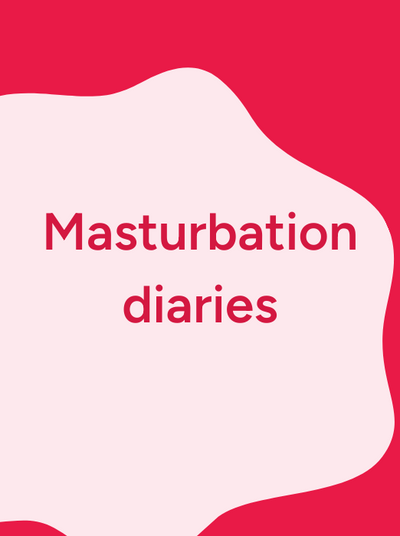An LGBTQIA+ guide on how to have safe sex, including physical barriers, setting boundaries, and emotional support. Here's for the sexual health practices that go beyond heteronormativity!
Queer sex can be gorgeous, radical, liberating, joyful, and healing sex. But, like any sex, it should be safe. The conversation around safe sex often focuses on a cis-heteronormative, pleasure-averse assumption that sex is for reproductive purposes only. Hence, many not-so-educational sex education curriculums aim to ensure reduced pregnancy risk for those engaging in penis-in-vagina intercourse. This approach to discussing sexual safety is limited, and frankly, it sucks for the following reasons;
1) It fails to prioritize pleasure, assuming that sex is just a means to an end.
2) It reflects an outdated narrative rooted in dominant religious thoughts, which pressures and expects all individuals assigned female/male at birth to pump out babies.
3) It discounts queer sex and any sex that does not involve p-in-v penetration, which leads to confusing comments like, ‘Does this count?’, ‘How do lesbians even have sex?’ and so on.
It is important to note that not everyone has the same definition of sex. The renowned Kinsey Institute did a research study with 484 participants using the question “Would you say you had sex if you did XYZ sex act” and the only consistency they found was *drum roll* zero consistency. No matter the generation or gender, there was no agreement on the definition of ‘having had sex,’ be it anal, oral, vaginal, or digital (Sanders, 1999). As we’ll discuss soon, this is a vital part of sexual safety because it informs our experiences of communication, validation, and consent. While it can be confusing that we don’t have an agreed-upon definition of sex, we can also see this as something beautiful. It means that sex is ours to create! We get to shape our understanding and experience of sex based on our genuine desire rather than someone else’s definition, which can be so gorgeously freeing.
What does safe sex mean?
Sexual safety includes STI protection strategies, emotional well-being, consent, and so much more. This expansive definition of safety is even in the World Health Organization’s writing on sexual health, which reads:
Sexual health is a state of physical, emotional, mental and social well-being in relation to sexuality; it’s not merely the absence of disease or dysfunction. Sexual health requires a positive and respectful approach to sexuality and sexual relationships, as well as the possibility of having pleasurable and safe sexual experiences, free of coercion, discrimination and violence.For sexual health to be attained and maintained, the sexual rights of all persons must be respected, protected and filled (WHO, 2006).
This holistic definition encourages us to bring conversations of consent, physical safety, trauma-informed intimacy, diversity, and mental health into our understanding of sexual health and safety. WHOhooo for that! (Get it?)
SO, rolling with this understanding of sexual safety, here are four principles of safer queer sex from Marlee Liss, a somatic coach, and co-creator of F*ck Comp Het Support Club. While written from a queer lens, we should also note that anyone can apply these practices to their sex life regardless of gender or sexual orientation.
Four practices & principles for safer queer sex
1. STI protection help
When I first started having sex with other women and non-binary folk, I over-simplified safety. I echoed those reproductive-oriented assumptions by saying: I don’t even have to worry about safe sex now because I’m a lesbian, and there’s no way I’ll get pregnant. (Note that this assumption is false for various reasons, including that many trans women and genderqueer folk have penises and parts that can lead to pregnancy). But along with that ignorance, I also forgot to adequately account for STI protection until later in my lesbian journey. Unfortunately, there is still so much stigma and silence regarding STIs. But with more research and advocacy encouraging folks to speak up about these ‘taboo’ topics, we’re beginning to see how common STIs are. For instance, according to the CDC, more than one out of every six people aged 14-49 years have genital herpes in the US.
Communicating openly and honestly about our conditions and health status requires us to unpack some of that stigma. These are meaningful conversations to have before being intimate, and we should be aware that STIs can be transmitted among individuals regardless of gender. For instance, a study in 2011 found that women who have sex with women are no less at risk of STIs like chlamydia than women who have sex with men (Gorgos, 2011). So, one approach to enhancing STI protection and safety is by challenging the stigma and shame surrounding that conversation.
It’s essential to get tested regularly, clean sex toys thoroughly (always AND especially if you’re sharing them with different partners), be aware of visual signs of oral or genital herpes like cold sores, and consider using barrier methods. Barrier methods like dental dams may feel unsexy, but some wonderful alternatives like Lorals' FDA-approved silky latex panties exist! You can listen to my interview with Melanie Cristol, the founder of Lorals, on my podcast here.
For queer folk, micro-aggressions and cis-heteronormative assumptions at the STI testing clinic or doctor's office can range from irritating to downright harmful. Try to find LGBTQIA+ friendly clinics in your area or check out services like Wisp for prescriptions made online by board-approved physicians, meaning you may be able to avoid those painful IRL interactions.
2. The gender-affirming approach
Remember that safety includes our mental and emotional well-being too! When it comes to queer sex, it’s important to avoid making assumptions. Just as we ask folks their pronouns rather than assuming, asking someone what language they refer to their genitals and other body parts can enhance safety. Don’t prescribe someone with certain words or preferred sex positions because of the way they present. For instance, it’s common for folks to assume that masc-presenting individuals are tops and that femme-presenting individuals are bottoms. While this may be the case sometimes, this definitely cannot be generalized. Everybody is different, and gender expression does not determine sexual desires, boundaries, or preferences.
Communication is key! Always ask rather than assume and ditch bottom-shaming while you’re at it. No position is superior to another, and it’s all about mindful, consent-based language that does not feed into triggers and gender dysphoria.
3. Trauma-informed intimacy
Trauma-informed intimacy is an approach to sexuality that makes pleasure more accessible to trauma survivors. All approaches to sexuality should be as trauma-informed as possible, and it is especially important for queer sex for multiple reasons. The following statistics are from the CDC’s National IPV and Sexual Violence Survey:
1) Lesbian, gay, transgender, and bi-sexuals experience sexual violence at higher rates than straight people.
2) Queer folk also face higher rates of hate-motivated violence.
3) 46% of bisexual women have experienced the most extreme forms of sexual violence as compared to 17% of straight women.
4) 85% of victim advocates reported having worked with an LGTBQ+ survivor who was denied services because of their sexual orientation or gender identity.
Additionally, we are more likely to have experienced religious trauma due to anti-LGBTQ messaging in dominant religious institutions. Needless to say, our community is resilient AF and has been through a whole lot of harmful BS. We deserve care and safety, which is why safe queer sex can provide such powerful grounds for reclamation.
Here are some practices of trauma-informed intimacy to enhance the sense of safety:
- Discuss boundaries, fears, and desires before things get too steamy. It can be challenging to voice discomfort during intimacy and arousal, so getting clear on each other’s wants and limits beforehand can make a big difference.
- Recognize your triggers and acknowledge that big feelings can arise during sex. Doing this is a compassionate and honest way of meeting ourselves where we’re at and is an excellent strategy for prevention. Ask yourself: Do certain types of smells, colors, or types of touch have painful associations? Can these things be avoided?
- Practice aftercare by talking about what you want or need to happen after intimacy. These can be long-term practices, such as discussing whether you’d like to see each other after and what your expectations are. Or they can be more short-term practices, like cuddling, breathing, or taking space right after intimacy. Ask yourself: What would allow me to feel safer and supported within this connection?
4. Sexual humility and consent
As discussed, everyone has a different definition of sex. But, the most cis-heteronormative and narrow understanding of sex we repeatedly hear is one that exclusively validates P-in-V penetration and sees reproduction as the goal. Sexual script theory is the idea that sexual behavior is a result of extensive prior learning that teaches us sexual etiquette and how to interpret specific situations. According to this concept, we’ve all learned an elaborate script that tells us the who, what, when, where and why of sexual behavior (Hyde, 1994).
These scripts even inform the sequence of events that happen during sex. But, when it comes to queer sex, these scripts are tossed out the window, and we are left to a kind of improv - led by (hopefully) honest desire. For cishet folk, saying ‘do you want to have sex?’ often implies an obvious goal of P-in-V penetration (though it shouldn’t), but for queer sexual interaction, this just isn’t the case. If I say to another queer person, ‘do you want to have sex?’ we may not have a shared understanding of what sexual acts are involved. Hence, emphasized communication and clarification make for very much-needed enthusiastic consent. Because we don’t have those hetero mainstream scripts to rely upon, we must be very clear and upfront about what we actually want. Essentially, we must be prepared to define what sex means and looks like to us in any given ‘us’ situation.
I love the term ‘sexual humility’ (I just made it up, I think?) because it reminds us that there’s no such thing as being a sex expert, especially when we are with a new partner. Even if you’ve had sex with 500 other queer folks, you still must bring humility into interactions with a new sexual partner by acknowledging that everybody is different. What felt amazing for a previous partner may not feel amazing for this particular person. We should always approach sex with new partners like a series of first times! Don’t assume you know what each person likes. An “I know better than you about what feels good for your body” approach is much less caring (and hot IMO) than being curious and communicative about what that person actually likes. By checking in and asking, we affirm one another’s body wisdom, placing each individual at the center of their sexual experience, which can be a gorgeously supportive aspect of trauma-informed intimacy and healing, empowering sex.
10 tips for safer queer sex
1. Get tested regularly
If a medical provider makes you feel uncomfortable, find an LGBTQIA+-friendly clinic.
2. Learn about STIs
Many STIs don’t have symptoms, but being aware of the types of infections and how they can be transmitted is reassuring.
3. Consider barrier methods for STI protection
Internal or external condoms, dental dams, latex panties, gloves.
4. Clean and protect sex toys
Vibrators, strap-ons, dildos… if you’re using or sharing, be sure to clean correctly between activities and/or use external condoms on toys.
5. Break the stigmas
Talk about STIs, STDs, screening, and results to normalize the conversation we should all be able to have before being intimate with someone.
6. Use shame-free language
Learn more about a partner’s sexual health by asking, ‘have you been tested?’ rather than ‘are you clean?’.
7. Avoid assumptions
Ask a partner which words they use to describe their body and what they like.
8. Understand your boundaries
Consider how past trauma may affect your intimacy experience and the aftercare you want.
9. Always practice consent
Giving and receiving clear consent via communication is necessary for any sexual encounter. Try questions like ‘Can I touch…?’ or ‘Is this okay?’.
10. Use body-safe lube
Lubricant heightens any sex sensations and can prevent pain.
More about Marlee Liss:
I am a sensual reclamation coach, award-winning speaker, author and restorative justice advocate. I am also a lesbian, sparkle-loving, Jewish feminist and trailblazer. I made history in the justice system when my sexual assault case became the 1st in North America to conclude with restorative justice through the courts. Since then, I have coached hundreds of women and non-binary folk in reclaiming sensuality and embodied leadership. I've shared my voice via Forbes, HuffPost,Buzzfeed, Mel Robbins Show, Recovering from Reality podcast with Alexis Haines, and more. As a speaker, I have presented/consulted for for the US Military Sexual Assault Response Team, on an elite panel for the National Action Plan to End Gender-Based Violence, Fordham School of Law and more. Currently, my story is being made into a documentary directed by Kelsey Darragh. Learn more at www.marleeliss.com
If you’re looking for resources on unpacking compulsory heterosexuality and connecting with like-minded queer and questioning folk who are on a similar journey, please do check out the F*ck Comp Het Support Club! This is a 2SLGBTQIA+ community space created by myself and fellow queer sex educator (and bestie!) Eva Bloom aka @whatsmybodydoing. We’ve welcomed members from all over the world in our 24/7 virtual discord community featuring monthly guided calls. Get the details and join the club here. If you have any questions, don’t hesitate to message me on IG or Tik Tok @marleeliss where you will find plenty of free content on trauma-informed intimacy and queerness! Remember, queer intimacy is radical and you deserve to feel beautiful, safe, and powerful within your body and within your sex life.
Other great resources:
For trans safe sex http://assets2.hrc.org/files/assets/resources/Trans_Safer_Sex_Guide_FINAL.pdf
For lesbian sex https://www.youtube.com/watch?v=aQcUPxj6mZ4
References:
Sanders, S. A., & Reinisch, J. M. (1999). Would you say you "had sex" if...?. JAMA, 281(3), 275–277. https://doi.org/10.1001/jama.281.3.275
https://www.hrc.org/resources/sexual-assault-and-the-lgbt-community
https://www.bustle.com/p/what-safe-sex-looks-like-to-6-queer-women-nonbinary-femmes-18695648
https://www.npr.org/2021/04/22/989826953/sex-ed-often-leaves-out-queer-people-heres-what-to-know
Linda M. Gorgos, Jeanne M. Marrazzo, Sexually Transmitted Infections Among Women Who Have Sex With Women, Clinical Infectious Diseases, Volume 53, Issue suppl_3, 15 December 2011, Pages S84–S91, https://doi.org/10.1093/cid/cir697
Illustration by Pink Bits for Smile Makers.











